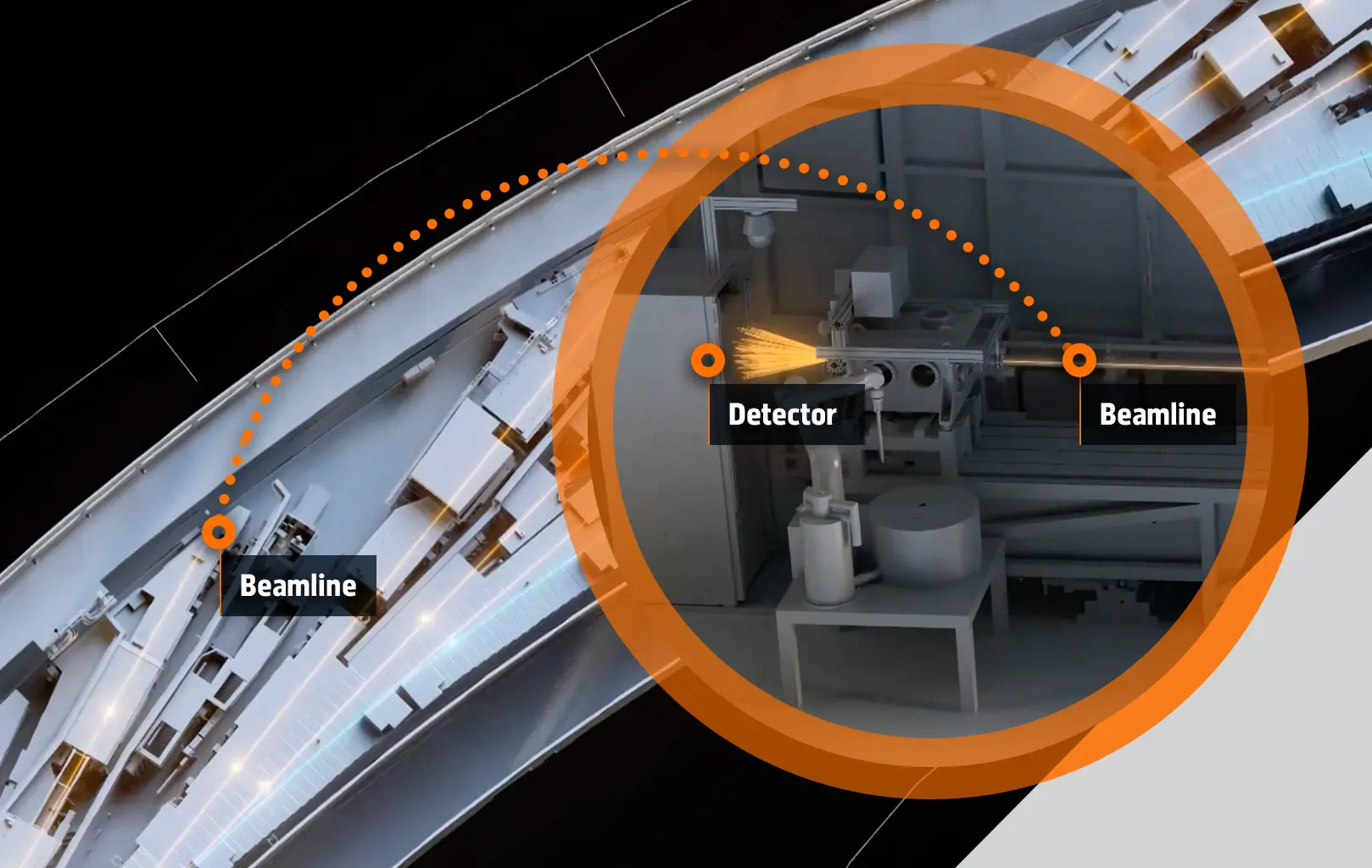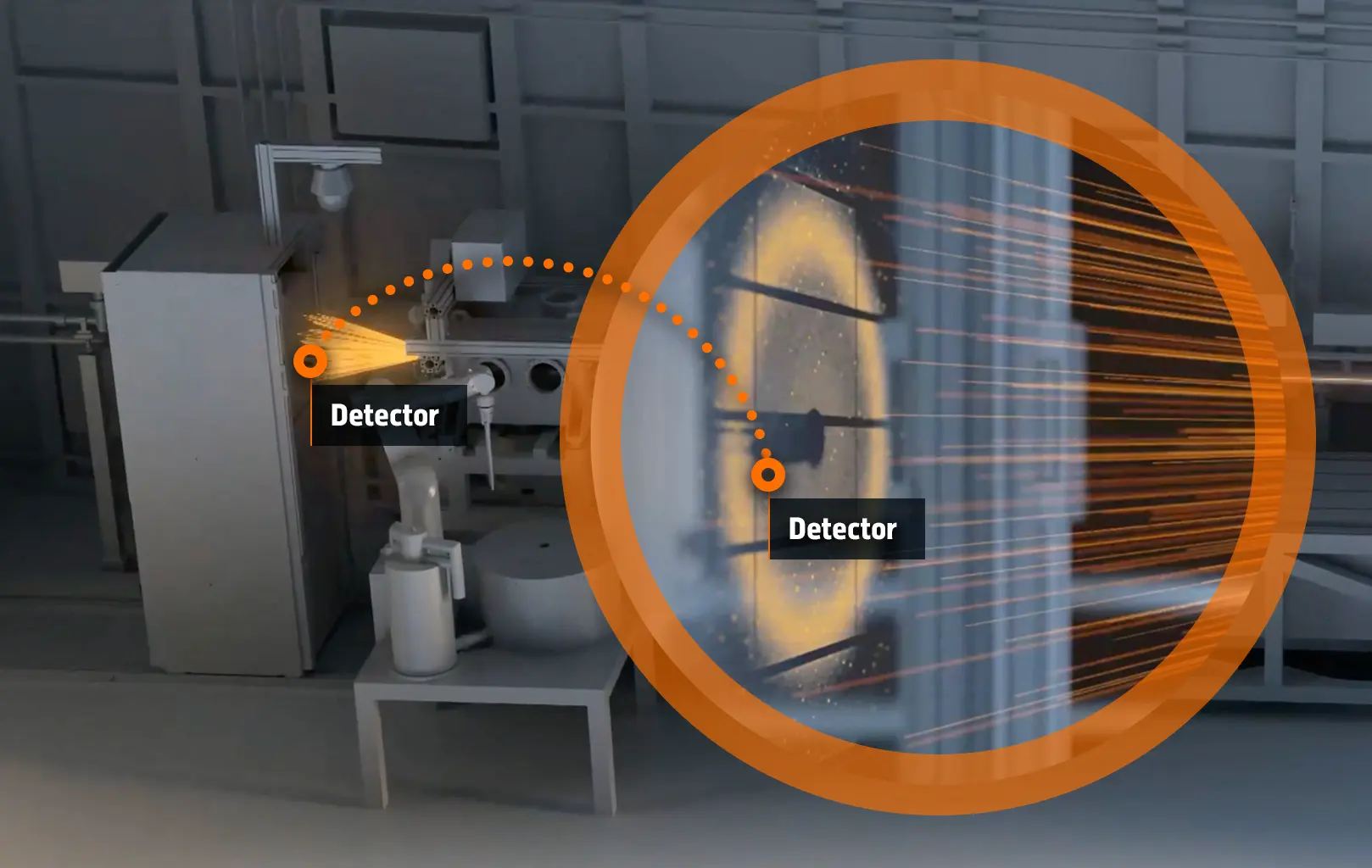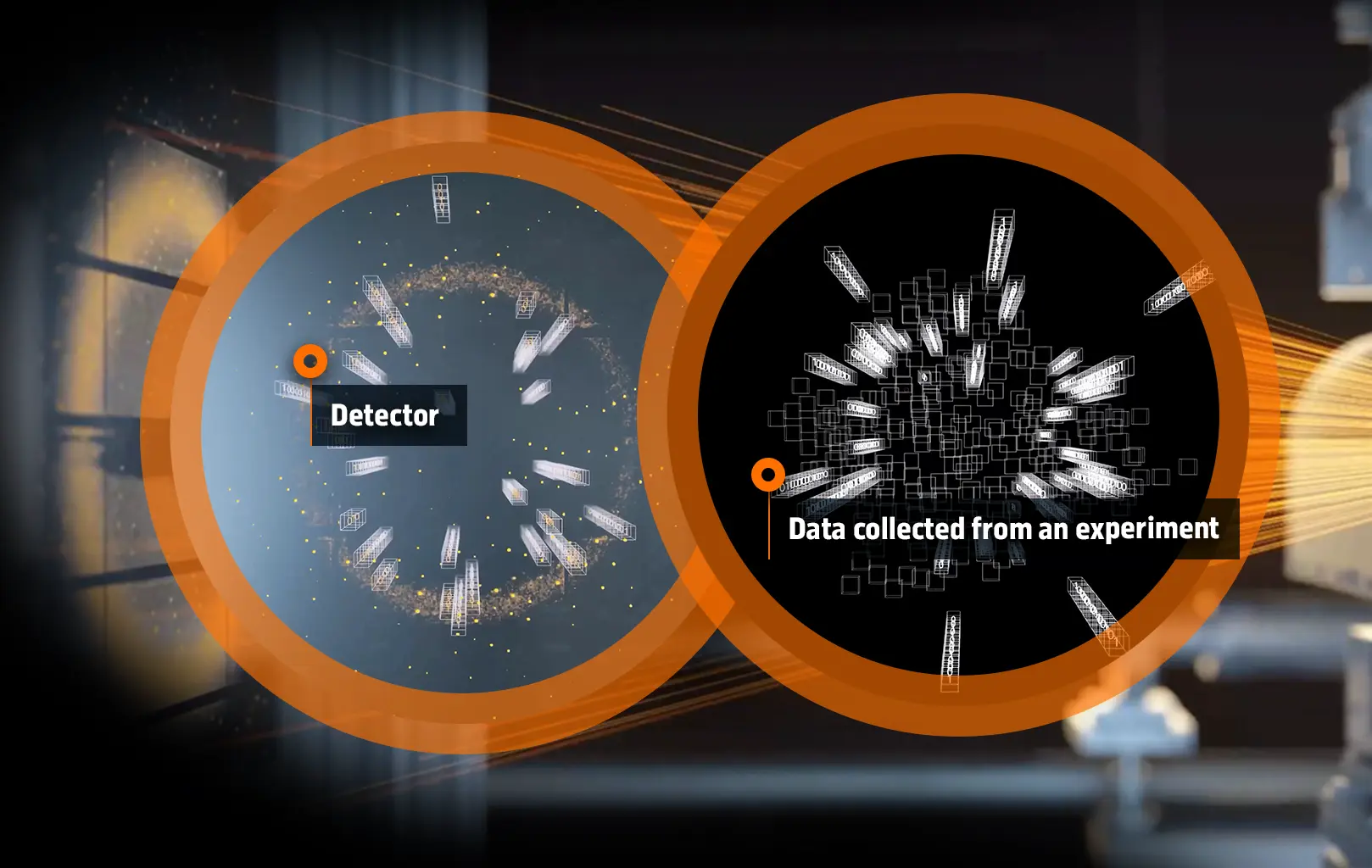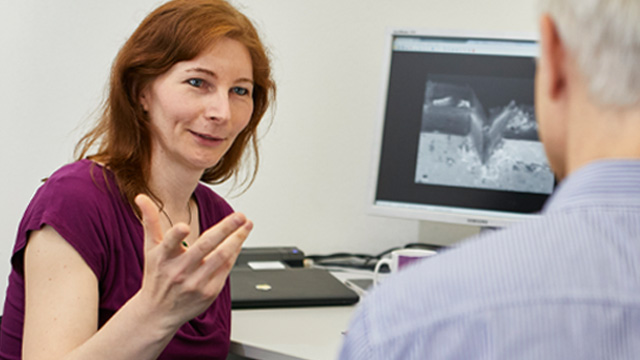
Beamlines guide the light
Ultra-bright X-ray light is generated in the PETRA IV storage ring. The light travels in pipes to the measuring stations, where researchers use it to X-ray their samples.
In the future PETRA IV, four experimental halls will be grouped around the 2300 metre long storage ring. It is in these halls where the light will be guided to the measuring stations via the metal pipes, some of which are hundreds of metres long. A total of 36 of these pipes are being built for PETRA IV; experts refer to them as beamlines.
PETRA IV is scheduled to go into operation with 19 beamlines from 2032, and a further 12 beamlines will be installed in the new experimental hall by the end of 2035. Five additional spaces for new beamlines will remain free, leaving room for new technologies and collaboration with companies.
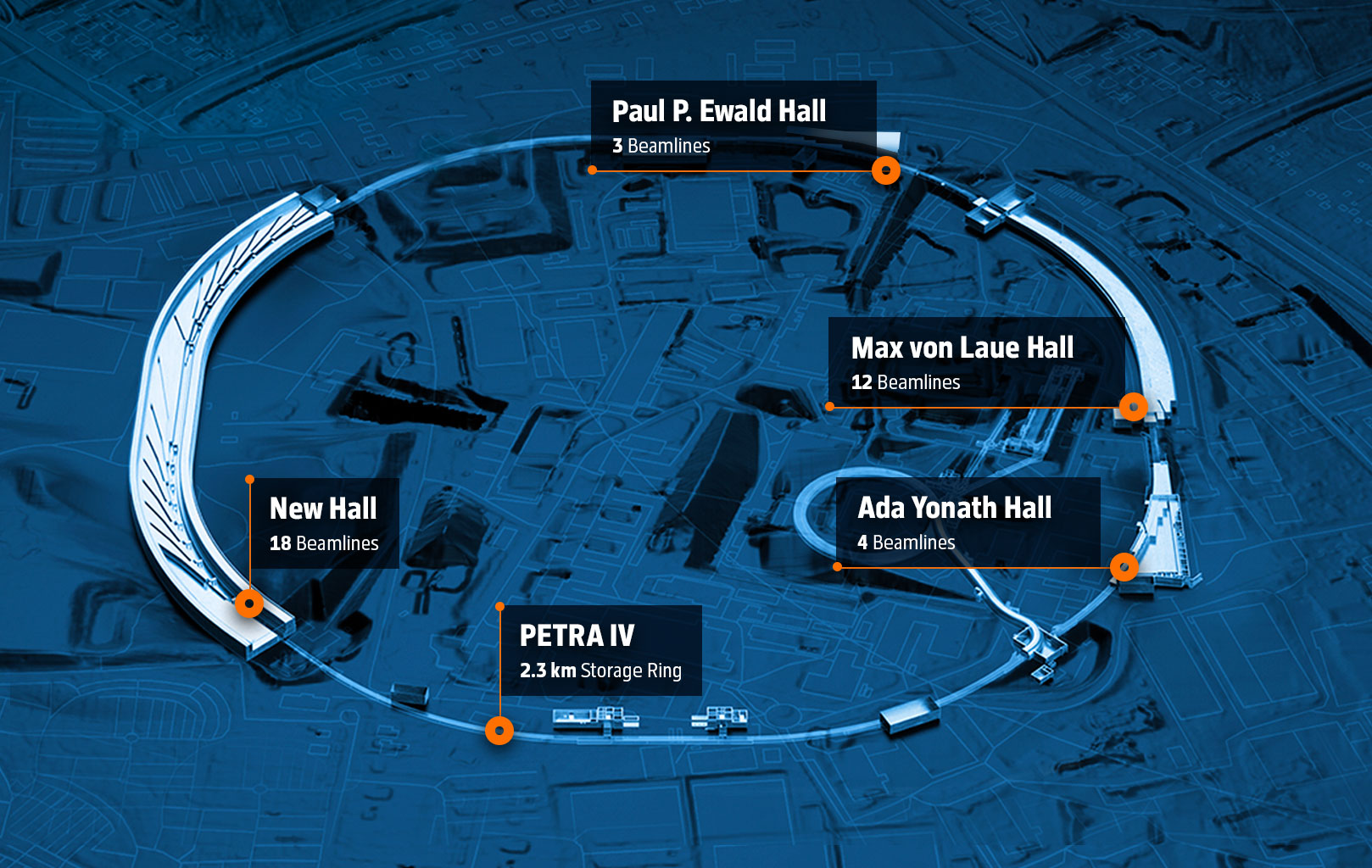
The images show the path of the light through PETRA IV: from the storage ring into the beamline to the object that is being analysed experimentally.
What kind of objects are examined in X-ray light?
The measuring stations at the end of the beamlines offer optimal experimental conditions for a wide variety of research and development projects. Some measuring stations are specialised in the analysis of biomolecules, others in the investigation of new high-tech materials. Still others enable the precise analysis of nanomaterials or minerals from the earth's interior.
In 2023, more than 3500 researchers will visit the 25 beamlines that are already in operation at DESY's PETRA III facility for their experiments. PETRA IV's outstanding experimental possibilities, sample throughput, and new service offerings will attract an even larger group of scientists. DESY expects at least 5000 researchers.
Analyses of various trend studies and the needs of science and industry form the basis for the design of the planned beamlines.

Powerful and precise: PETRA's new beamlines
The new possibilities of PETRA IV are utilised on up to 36 beamlines. Nine of these beamlines are described in more detail in the following list.
This beamline will generate high-energy X-rays that can penetrate particularly deep inside material samples. This will make it possible, for example, to observe in detail how a battery charges and discharges. Such findings could lead to storage materials with a longer-lasting performance.
Here, matter can be studied under extreme conditions, especially at high pressures and temperatures. Among other things, this will allow the production of new, diamond-like materials that exhibit extraordinary mechanical properties.
This will allow processes to be observed in disordered materials, such as plastics or biological cells. As a result, it will be possible to analyse, for example, the role of water molecules in the folding of protein molecules or what happens when a material corrodes.
Using a special robot, samples of materials can be switched automatically, leading to a high sample throughput. This will result in a particularly effective utilisation. The range of research will also be extremely broad. A wide variety of substances can be studied in detail, from new types of solar cells to biological samples and micrometeorites.
Here, samples can be scanned by the fine X-ray beam with pinpoint accuracy, sometimes even with nanometre precision. This will produce high-resolution images containing a great deal of physical information. Among other things, high-tech materials and novel superconductors for quantum technologies can be studied, but also rock samples from comets and asteroids.
This is specialised in the study of biological systems. It will enable trace elements, such as potassium or calcium, to be detected in organisms and the target sites of anti-cancer drugs to be identified. In addition, this beamline will allow extremely high-resolution 3D images to be produced, on which it may even be possible to recognise the orientation of individual biomolecules inside a cell.
Here, the crystal structure of a sample can be analysed selectively and in great detail. This will make it possible to visualise how and where exactly the crystal lattice in a battery electrode can become so bloated as to suffer damage. This would allow more sustainable batteries to be developed.
Among other things, this beamline will allow the electronic and magnetic properties of a sample to be scanned with very high precision as a function of position. This can be useful, for example, in developing highly sensitive magnetic sensors.
This beamline will analyse the electrons that are emitted from a sample when it is illuminated with X-rays. This will allow the electronic properties of semiconductors and novel quantum materials to be measured with extremely high precision. Precise scanning will also allow electronic components to be examined in great detail.

PETRA IV Project Office
Would you like information about the PETRA IV project, or do you wish to learn more about the scientific facts behind PETRA IV? Please feel free to contact us.
Further research topics

Healthcare
How can diseases be better tackled?

New materials
How can we save resources?

Energy
How can we make more resilient materials?

New technologies
What do we need for the digital world of tomorrow?

Earth and the environment
How do we preserve our ecosystems?

Cultural heritage
How can we preserve our cultural treasures?



